The Complete Guide on how to look after your macrame
You have made or bought a gorgeous and elegant macrame, now, how do you care for and look after it?
I can’t believe it took me so long to write this blog, but I have finally put together a complete guide on how to look after your beautiful macrame pieces, for you.
What can you learn from this blog:
1- Understand macrame materials
2- General tips to maintain & care for your macrame
3- Care instructions for different types of macrame
4- Reviving your Macramé
5- How to store your macrame
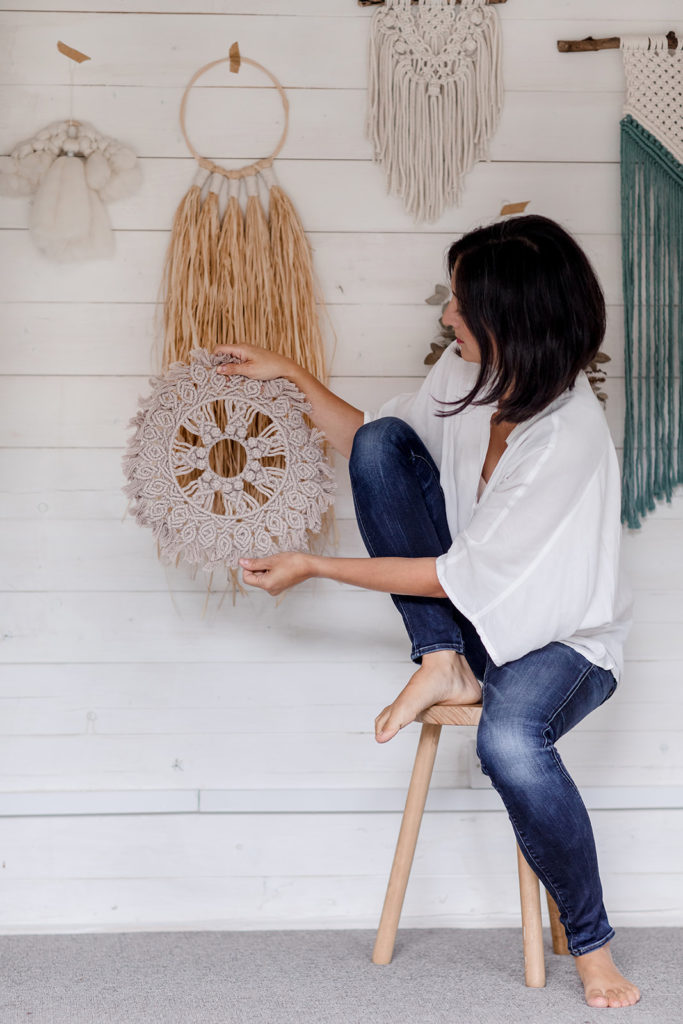
Understanding Macramé Materials
Before diving into care instructions, it’s important to understand the materials commonly used in macramé and their caring properties.
Modern macramé includes cotton, jute, hemp, and various types of yarn like bamboo and leather. Each material has its unique characteristics and requires specific care.
- Cotton- Braided string: Soft and durable, cotton is a popular choice for macramé projects. It’s relatively easy to clean and maintain, making it ideal for indoor and outdoor pieces.
- Cotton- Single Twist & 3-Ply: Soft and delicate, this type of string is prevalent for wall hangings and plant hangers. It’s relatively easy to clean and maintain, it’s ideal for indoor pieces only.
- Bamboo string: it’s extremely soft but also very delicate and not easy to clean.
- Jute: Known for its natural, rustic appearance, jute adds texture to macramé designs. However, jute fibres can be prone to fraying and deterioration over time, especially when exposed to moisture and direct sun.
- Hemp or Raffia: Hemp is a sturdy and eco-friendly material that lends a rugged charm to macramé creations. Like jute, hemp and raffia require gentle care to prevent damage to their fibres.
- Leather: beautiful and elegant and easy to clean if it’s waxed, less so if it’s mat or suede finish.
NOTE- Your macrame might also have parts or accessories made of wood, metal, beads, driftwood, or dowel, be mindful of them when caring for your macrame.
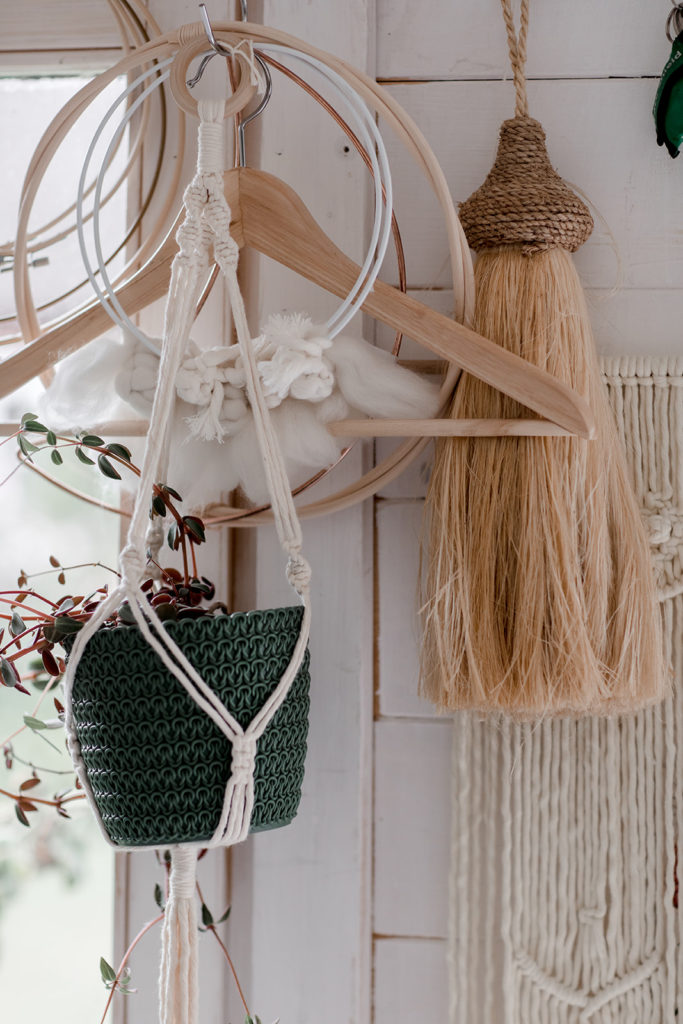
General Care Tips for Your Macramé
Regardless of the material used, certain care practices apply to all macramé pieces. Here are some general tips to keep your pieces looking their best:
- Dust regularly: Dust accumulation can dull the appearance of macramé. You can take your macramé outside and give it a gentle shake to dislodge any dirt or use a soft brush or lint roller (my preferred option) to gently remove dust from your macrame pieces.
- For a more in-depth clean, a vacuum cleaner is a possibility, however, I do not recommend it. If you decide to use this option, set the vacuum to a low suction level and use your hands to hold any fringes, to prevent any fraying or damage to the fibres of the macrame.
- Avoid direct sunlight: Prolonged exposure to sunlight can cause fading and weakening of macramé fibres. Display your creations away from direct sunlight when possible to minimize damage or rotate the location of your macrame piece.
- Handle with care: When moving or handling your macramé pieces, be gentle to avoid snagging or stretching the knots. Support larger pieces from underneath to prevent strain on the cords.
- Store properly: When not in use, store your macramé creations in a clean, dry place away from moisture and humidity. Check the last section of the blog for more tips.

Care Instructions for different types of macrame
Wall Hanging care:
Spot clean when possible using a damp cloth or sponge. Be very gentle and avoid excessive rubbing. You can use lukewarm water or a natural cleanser like vinegar if required.
For macrame made from single-twist string or bamboo string especially, be very gentle not to pull the threads.
For macrame made from braided string (this type of string doesn’t fray), you can follow the instructions below:
Avoid submerging the macramé item in water if it’s attached to any wood, metal, beads, or other similar materials.
Macrame hand wash care:
1- Fill a basin with lukewarm water and a mild or natural detergent.
2- Gently agitate the water to create suds, then submerge the part of the macramé piece that needs cleaning.
3- Swish the piece gently in the water, avoiding excessive rubbing.
4- Rinse thoroughly with clean water and very gently squeeze out excess water.
5- Lay flat to dry, shaping the piece as desired. You can place a towel under the wall hanging to keep it in shape. Dry in a well-ventilated area away from direct sunlight or place on a clean, flat surface that won’t get damaged by moisture. Allow the piece to air dry completely before using or storing.
Plant Hangers care:
Spot clean: Use a damp cloth or sponge to spot clean stains on macramé. Be very gentle and avoid excessive rubbing. You can use lukewarm water or a natural cleanser like vinegar if required.
After spot cleaning, allow the piece to air dry completely before using or storing.
You can hand wash your macrame plant hanger as per the instructions above, if necessary.
If the macrame plant hanger is made from jute or hemp fibers, avoid soaking: excessive moisture can weaken the natural fibers.
Bags and Clothing care:
For macrame made from braided string (this type of string doesn’t fray), you can follow the ‘Hand Wash Care’ instructions.
If you have some tough stains on your macrame bag or clothing which can happen easily, I recommend Clothes Doctor ‘No.10 Tough Love Stain Removal’ here. You can use it for spot cleaning or to add to the natural detergent ‘Hand Wash Care’ instructions.
Rugs, cushion covers, table mats & runner care
These types of macrame are the ones that get dirty the most.
Most of the time is made with braided string (the type of string doesn’t fray) or 3-ply strings. Both types are quite resilient, especially the braided string.
Spot clean when possible using the instructions highlighted in ‘Wall Hanging care’ or ‘Hand Wash care’.
FOR TOUGHER STAINS:
I recommend Clothes Doctor ‘No.10 Tough Love Stain Removal’ here. You can use it for spot cleaning or to add to the natural detergent ‘Hand Wash Care’ instructions.
I have washed my rug in the washing machine with Clothes Doctor ‘No.10 Tough Love stain removal’, on a delicate cycle, cold wash, and no spin cycle. I did it to test the macrame rug’s durability and it came out completely clean with no damage. I have rewashed it twice now and I got the same result. I was confident about the quality of the material and that my knots were tight.
However, I still recommend hand washing as the best way to care for your macrame with stains.
NOTE- If using the washing machine, you could place your macrame inside a bra bag (or a pillowcase with the end secured shut) for extra protection.
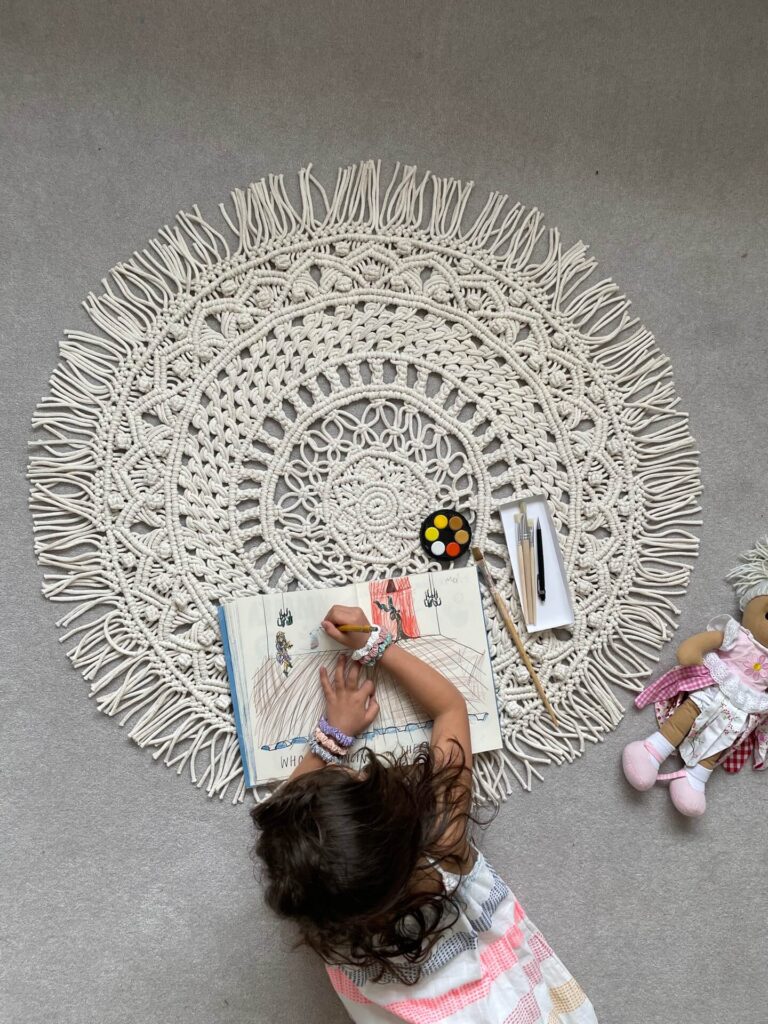
Jewellery care:
Spot clean: Use a damp cloth or sponge to spot clean stains on macramé. Be very gentle and avoid excessive rubbing. You can use lukewarm water or a natural cleanser like vinegar if required. Be mindful of any beads, metal, and wood.
After spot cleaning, allow the piece to air dry completely before using or storing.
Hammocks, poufs & sun longes care:
Always store in a clean, dry place away from moisture and humidity when not in use, especially outdoor furniture.
Spot clean when possible using the instructions highlighted in ‘Wall Hanging care’ or ‘Hand Wash care’.
After spot cleaning, allow the piece to air dry completely before using or storing.
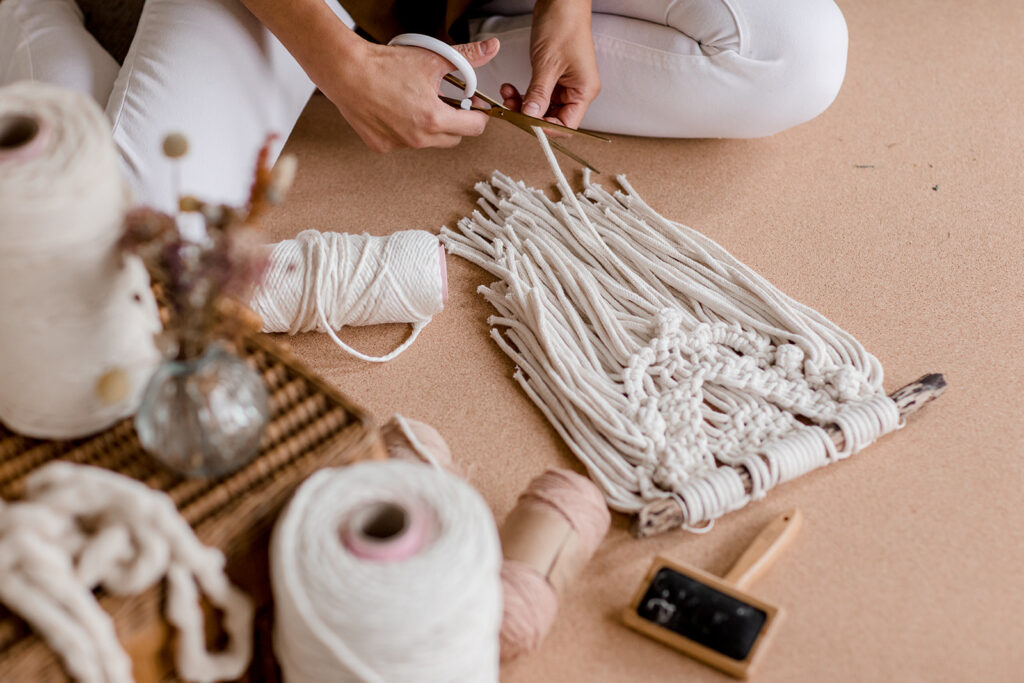
Reviving Macramé
Despite your best efforts, macramé pieces may need a tidy-up once in a while.
- Frayed edges: Trim any frayed or loose ends carefully with sharp scissors to prevent further unravelling.
- Knot tightening: If knots become loose or undone, carefully re-tighten them using a crochet hook or your fingers. Secure the knots with a drop of fabric glue if needed.
- Some of the fringes need to be brushed. You can use a comb or pet brush with metal bristles
How to keep macrame fringe neat?
- If the fringe on your macramé piece is tangled or folded, brush the fringe with a pet brush with metal bristles or comb to neaten it up again.
- For long fringes, simply run your fingers downwards through the fringe to tame the fringe and settle everything into place.
- If necessary, you can iron or steam the fringe to straighten out any kinks. If using an iron, place a tea towel over the macramé fringe and iron the tea towel to protect the fibre from direct heat. Be sure to avoid any areas with glue as the heat may weaken the bond.
- You can use Krylon spray adhesive or similar to keep the brushed fringe in place.
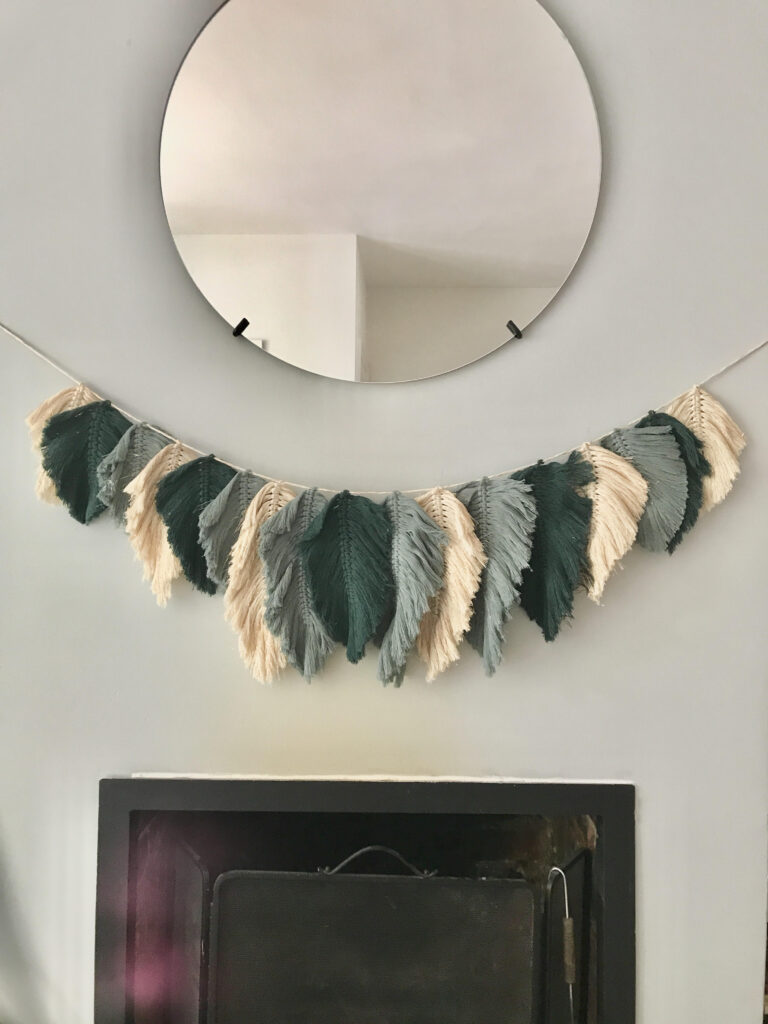
How to store your macrame
If you are a macrame maker with many macrame pieces and you want to store them in boxes and shelves between markets, keep them tidy and save space, you can check this blog post ‘How to store your macrame’ here with my top 3 tips.
Helpful LAST tips:
- Avoid using warm water, as this will make the cotton material shrink in size
- Avoid bleached detergents. To wash colored macrame, use 2 tablespoons of baking soda instead.
- Avoid drying them out in sunlight, as it will cause the material to become hard.
- Avoid placing them in damp or humid areas to prevent mould or mildew growth.
- Do not bleach.
- Do not tumble dry.
- Do not dry clean, as this process is not suitable for macrame.
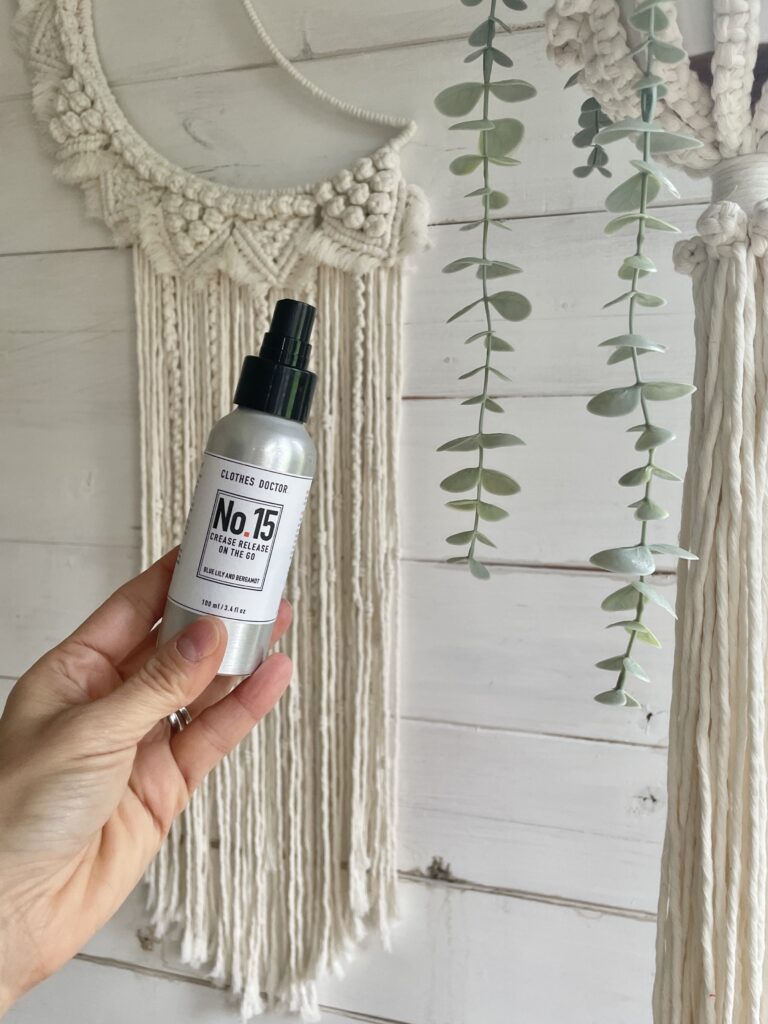
Conclusion: With proper care and maintenance, your macramé creations can remain beautiful and vibrant for years to come. By understanding the materials used in macramé, following general care tips, and implementing specific care instructions for different types of macrame, you can ensure that your pieces stand the test of time. Remember to handle your macramé with care, and avoid exposure to harsh elements. With these guidelines in mind, you can continue to enjoy the beauty and artistry of macramé in your home or workspace.
PIN IT FOR LATER

Want some FREE Resouces?
Have any questions? Want to chat it through? Come see me on my Instagram pages, I hang out in the DMs daily and would love to hear from you!
- For everything Macrame: @_twome
- For dedicated Small Biz Tips: @hellocreatives_academy
Which macrame artist are you?
Whether you are just learning the ropes of your first knot, or mastering the intricacies of creating your patterns —discover which macrame project best suits your hidden macrame superpower and more free stuff just for your archetype!
Let’s have some fun!